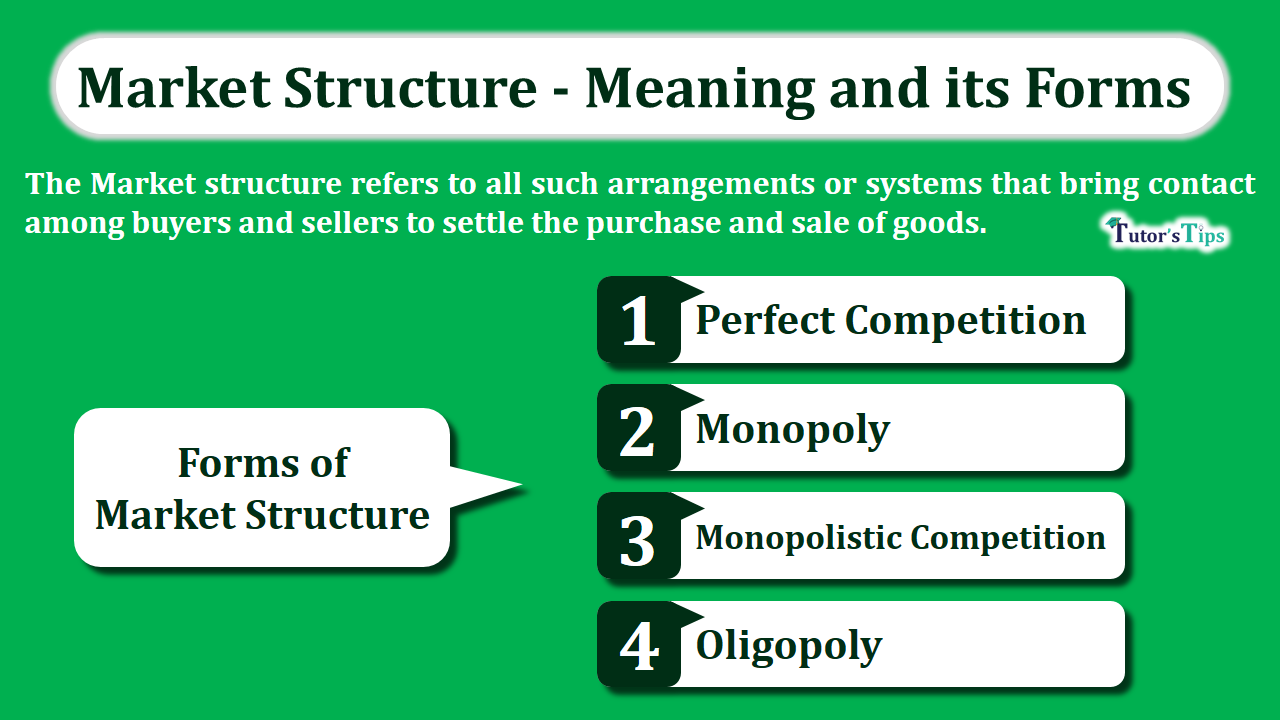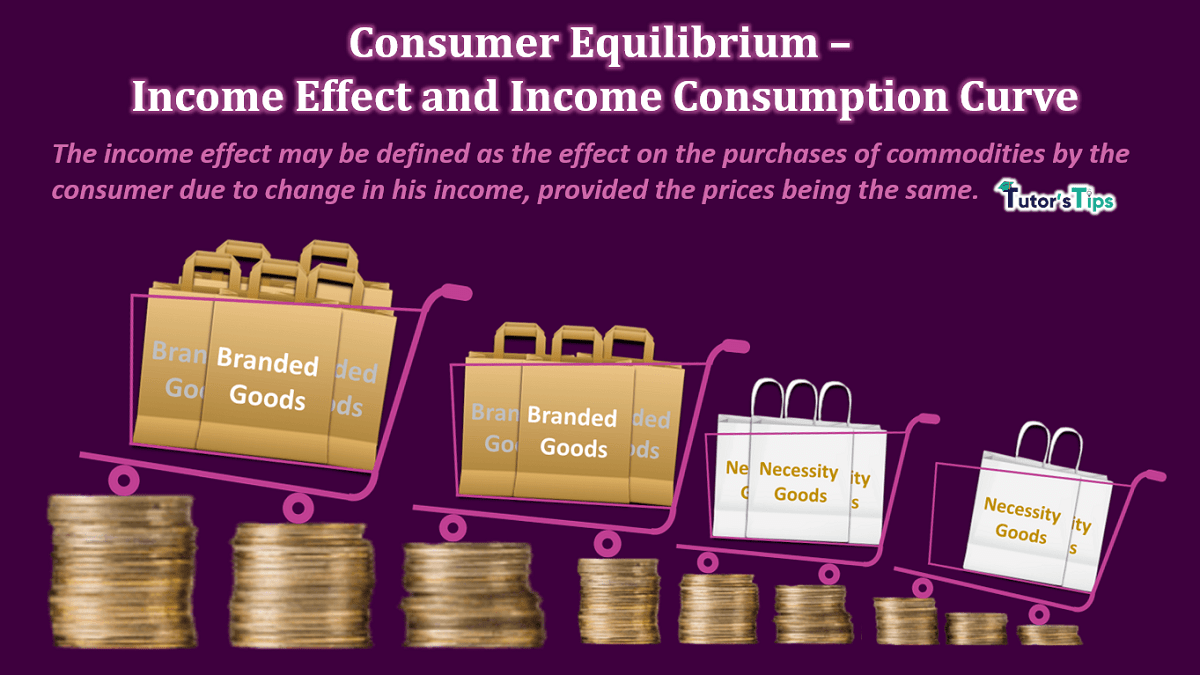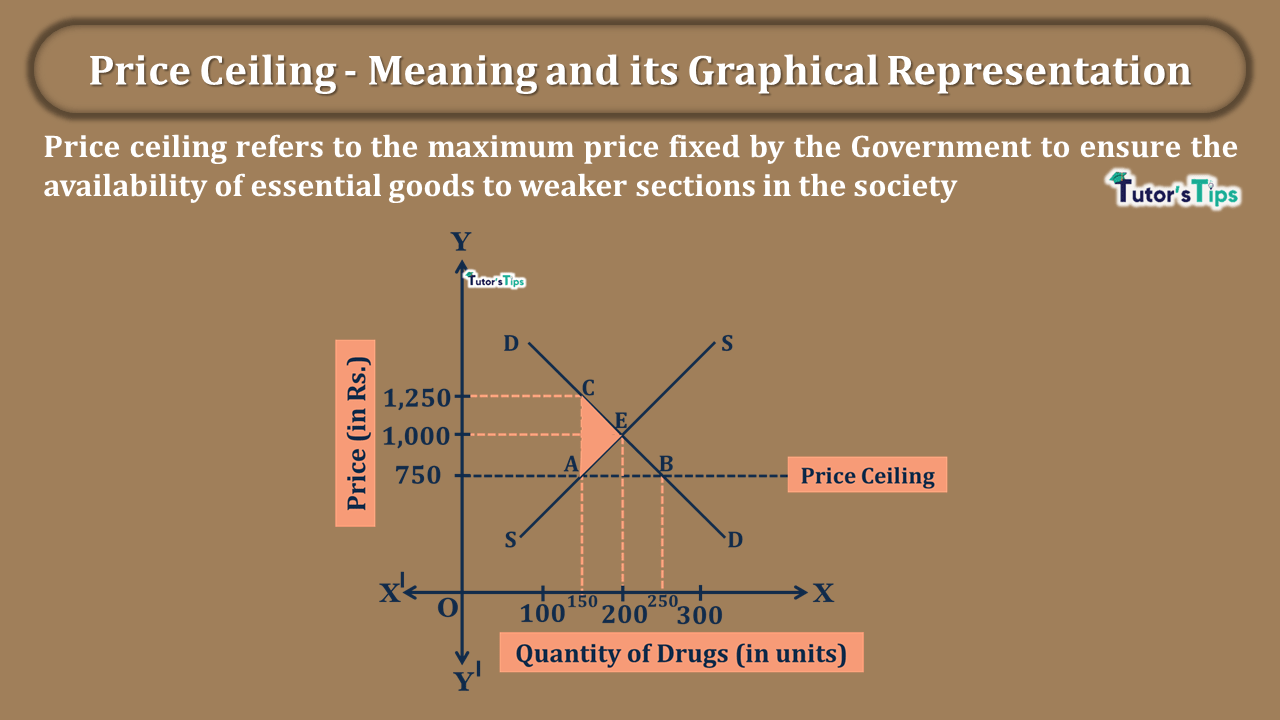The term Market structure in economics refers to the system in which buyers and sellers contact each other to settle the sale and purchase of goods and services.
Meaning of Market Structure:
Market structure refers to the system or arrangement in which parties i.e. buyers and sellers engage in exchange activities. In other words, It refers to the nature and degree of competition for goods and services.
In general, the market structure includes a place where buying and selling of goods occur. But, in Economics, the meaning of this term has a wider perspective. Here, it doesn’t mean a particular place for buying and selling goods and services but the whole area where buyers and sellers are spread.
Thus, the market structure involves all such arrangements or systems that bring contact among buyers and sellers to settle the purchase and sale of goods.
Forms of Market Structure:
The market structure can be classified as :
- Perfect Competition
- Monopoly
- Monopolistic Competition
- Oligopoly
These can be explained as under:
Perfect Competition:
It refers to the market in which there are many firms selling a certain homogenous product. In other words, in this type of market, there are many buyers and sellers of a homogenous product. A single firm or seller cant decide the price of the product. Consequently, the market forces like demand and supply determine the price level. Also, the individual firms or sellers are price takers in this market as they have no control over the price.
Monopoly:
It is a form of market in which there is a single seller of a commodity or product with no close substitutes. In other words, in this type of market, there is only one seller having full control over the price of the product. Thus, the seller or producer is known as a price maker or price setter. Since there is only one producer of the product in the market, the firm and industry mean the same. For example, Railways in India is a monopoly industry of the Government of India.
Monopolistic Competition:
It refers to the form of the market in which there is a large number of sellers selling the differentiated products from that of others. Generally, differentiation is promoted through the trademark or the brand-name. For example, Firms producing the different brands of noodles are Maggi, Sunfeast Yipee, Ching’s Secret, Knorr and Patanjali, etc. In this type of market, the firms have partial control over the prices. Thus, it can be said as monopolistic competition is the mixture of monopoly and perfect competition.
Oligopoly:
It is a form of market in which there are a few big producing firms and a large number of buyers for a commodity or a product. The decisions of one firm impact the activities of another firm too. Accordingly, n this type of market, there is a huge interdependence among the competing firms. For example, the car market is an oligopoly in India as there are a few producers in the market: Toyota, Ford, Audi, BMW, Volkswagen and GM. Each one of these carries a specific market share in the market. Thus, we can say that oligopoly carries a state of limited competition in itself.
Advertisement-X
Thanks Please share with your friends
Comment if you have any questions.
References:
Introductory Microeconomics – Class 11 – CBSE (2020-21)







3 Comments